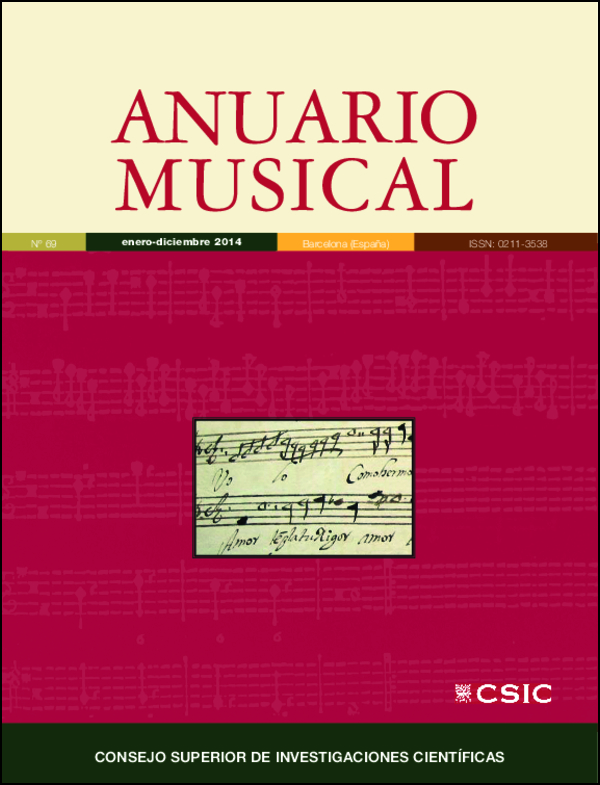The “Fuga a quatro todas las bozes por vna sexto tono” by Antonio de Cabezón and its partial textualisation by Melchior Franck (Da pacem Domine)
DOI:
https://doi.org/10.3989/anuariomusical.2014.69.162Keywords:
Antonio de Cabezón, Tomás de Santa María, Melchior Franck, fugue, fuga a quatro, canon, tiento, analysis, Da pacem DomineAbstract
The fuga a quatro by Antonio de Cabezón is a four-voice canon. It is one of the most extraordinary pieces of the collection Obras de música para tecla, arpa y vihuela… because of its complex structure. Its characteristic feature lies in the partial interdependence of the subjects. In addition, we can glimpse a principle of variation which foresees a distant future: The continuously developing variation. The canon Da pacem Domine of Melchior Franck (well-known in German speaking countries) is a textualisation of the beginning of Cabezón’s Fuga a quatro, yet without any indication of this origin on the part of the composer Franck.
Downloads
Downloads
Published
How to Cite
Issue
Section
License
Copyright (c) 2014 Consejo Superior de Investigaciones Científicas (CSIC)

This work is licensed under a Creative Commons Attribution 4.0 International License.
© CSIC. Manuscripts published in both the print and online versions of this journal are the property of the Consejo Superior de Investigaciones Científicas, and quoting this source is a requirement for any partial or full reproduction.
All contents of this electronic edition, except where otherwise noted, are distributed under a Creative Commons Attribution 4.0 International (CC BY 4.0) licence. You may read the basic information and the legal text of the licence. The indication of the CC BY 4.0 licence must be expressly stated in this way when necessary.
Self-archiving in repositories, personal webpages or similar, of any version other than the final version of the work produced by the publisher, is not allowed.














